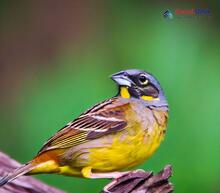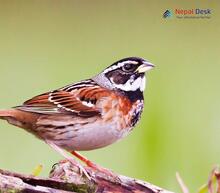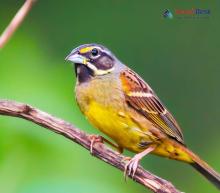Discovering Emberiza: Unraveling the Mysteries of Nepal's Enigmatic Buntings
Nestled within the breathtaking landscapes of Nepal, a diverse array of bird species captivate nature enthusiasts and ornithologists alike. Among these feathered wonders is the fascinating genus Emberiza, a group of passerine birds known as buntings. Here, we will delve into the world of these captivating birds by exploring their classification, common features, evolutionary relationships, and nomenclature.
Classification: A Place Among Passerines
Emberiza is a genus belonging to the Passeriformes order, which constitutes over half of all bird species on our planet. Within this vast array of birds, Emberiza falls under the family Emberizidae - a group that comprises around 44 species of buntings. Most commonly found across Eurasia and Africa, some species like the Grey-necked Bunting (Emberiza buchanani) and Chestnut-eared Bunting (Emberiza fucata) have also been spotted in Nepal.
Common Features: United by Characteristics
Despite variations in size and coloration among the different species, certain morphological features help define this unique genus. Distinctive characteristics include a conical-shaped bill adapted for seed-eating habits and a pronounced sexual dimorphism whereby males often exhibit brighter colors during the breeding season. These ground-nesting birds typically inhabit grasslands and farmlands and are known for their melodious songs that grace the fields and skies.
Evolutionary Relationships: A Connection Through Time
The evolutionary history of Emberiza is an intriguing area of study as scientists continue to investigate its genetic and morphological ties with other bird groups. Recent molecular research has revealed that Emberiza's closest relatives lie within the families Cardinalidae (cardinals and allies) and Thraupidae (tanagers). This fascinating discovery points to an ancient connection between buntings and their distant relatives within the avian world.
Nomenclature: The Science Behind the Names
The naming conventions for the birds within this genus can be attributed to their distinct features, habitats, or behaviors. For instance, as mentioned earlier, the Grey-necked Bunting (Emberiza buchanani) gets its name from the conspicuous greyish coloration on its nape. Similarly, the Yellowhammer (Emberiza citrinella) owes its moniker to its vibrant yellow feathers that stand out in fields and meadows.
As we continue to explore and learn more about the enigmatic Emberiza and its presence in Nepal, these elegant birds serve as a testament to the rich biodiversity that exists within our world. By deepening our understanding of their classification, common features, evolutionary relationships, and nomenclature, we embrace an appreciation for these magnificent creatures and the unique contributions they make to our ecosystem. So whether you're an avid birder or a casual enthusiast, let's spread our wings and venture into the captivating world of Emberiza.




